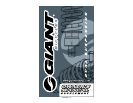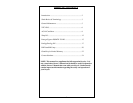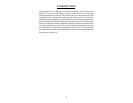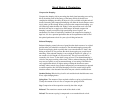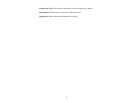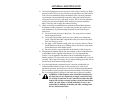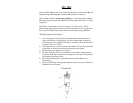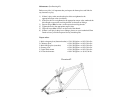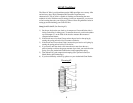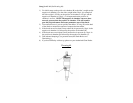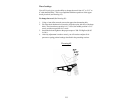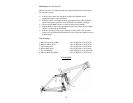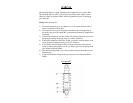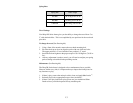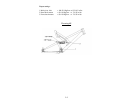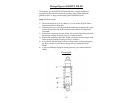
3
Shock Basics & Terminology
Compression Damping:
Compression damping aids in preventing the shock from bottoming out over big
hits by absorbing some of the energy of the bump. While all shocks have
compression damping, the ability to adjust it is only available on higher end coil
shocks. Increasing the compression damping will make the shock compress more
slowly when you hit a bump. When you increase the compression damping, you
will effectively make the bike ride “higher” in the suspension travel curve and
the shock will not be as supple over small bumps. Increased compression
damping is usually reserved for high speed riding where “big hits” are
encountered. For most off road riding conditions, the compression damping is
kept low. It is also a personal preference that can be experimented with to find
the optimal performance level for your style of riding and terrain.
Rebound Damping:
Rebound damping controls the rate of speed that the shock returns to its original
position after your wheel hits an obstacle. The rebound damping prevents the
shock from springing back so quickly that it can cause the bike to “buck” after
hitting an obstacle. It also prevents the shock from topping out or rapid shock
unloading. If the rebound damping is set too high the shock will “pack up”, or
not extend to its full length over successive hits. This will cause the bike to
eventually ride “lower” in the shock’s range of travel. The rebound damping is
critical to the proper tracking of the wheel. With no rebound damping, the wheel
may react too quickly to any encountered bump. A low setting is desirable for
very rough broken terrain. A higher setting will help the shock react more
smoothly where smooth, large gradual compressions are encountered as opposed
to smaller repetitive hits. Increased damping will aid in control in high speed
situations where a fast rebound of the shock may not coincide with the terrain.
Standard Setting: Ride the bicycle off a curb and the shock should bounce once.
If not, adjust damping knobs.
Spring Rate: The amount of force required to deflect a spring a given distance.
Usually the amount of force in lbs. to compress the spring one inch.
Sag: Compression of the suspension caused by the riders weight.
Rebound: The extension or return stroke of the shock or fork.
Preload: The amount a spring is compressed on an extended shock or fork.



